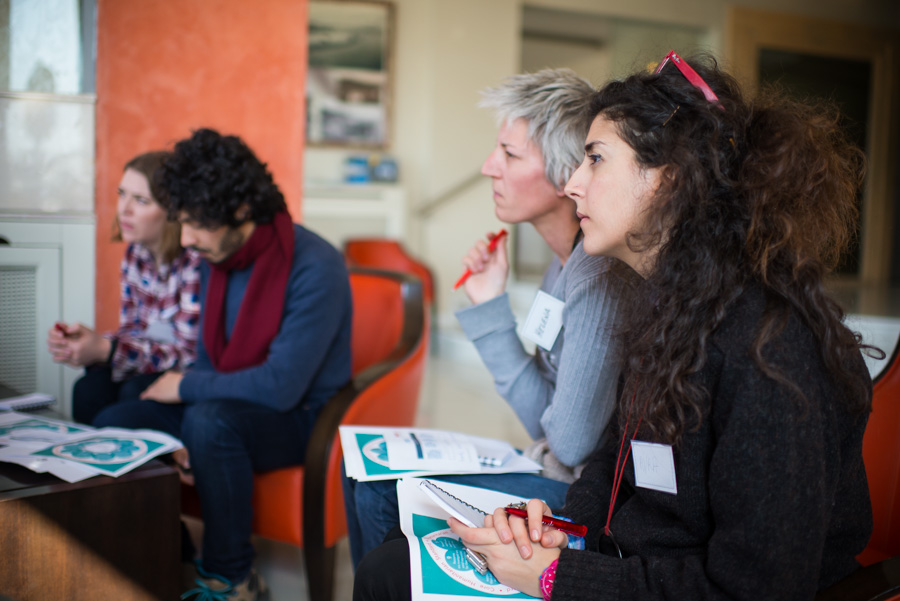Shaping the future: Our strategy for research and innovation in humanitarian response.

Shaping the future: Our strategy for research and innovation in humanitarian response.


This is the fifth blog post for the Innovative Impact Assessment project, describing the second and third pilots that researchers from Sussex University carried out in early 2018 to test our prototype of using video capture of in-class exercises to better assess training impact. Based on our previous work using human-centered design research and following the first pilot during a Training-of-Trainer course, we decided to test two new prototypes: frugal technology and mobile phones.
The second pilot took place during a Certificate of Security Management course in RedR’s offices in London in March, where we filmed a security incident simulation. Following prior consultation with RedR, a frugal technology approach, without additional light or microphones and mainly using static, wide-angle shots, was taken. The 15 training participants had been split into three groups consisting of members of a (fictional) humanitarian organisation, based in its London headquarter, country office in a national capital and a local field office. During the incident, which focused on several staff going missing while returning from a field trip, we focused on capturing short injects where actors, posing as a journalist, a board member and a local police chief, surprised the groups by bursting into their rooms with often angry questions and demands. This resulted in a very dynamic and high-energy filming environment, moving between three different rooms together with the actors and trainers and operating in a generally tense environment, approximating situations in the field.
What stood out from the footage was the way in which training participants engaged with the actors, tried to calm them down, present the situation from their point of view or simply get them to leave the room. So much of this depends on body language and positioning and tone of voice, besides what is actually said, which lends itself to video capture. On the other hand, the positioning of the camera and the enhancement of sound emerged as important factors to ensure footage is of sufficient quality to be used for participants viewing the footage for discussion and reflection (view back).
The third pilot took place in Thessaloniki, Greece later in March, during a Managing People course that was attended by 7 participants from across Europe. In prior consultation with trainers, a mock negotiation session between two participants, with one of them posing as the office manager and another as a staff member who had not followed a newly implemented security procedure, was chosen for the video capture. After evaluation difficulties from the first two pilots with view back because of the need for editing and transfer, in this pilot we tested participants using their own mobile phones for the video capture. This worked extremely well, as participants were in general very comfortable with their phones. Once again, the filming captured the ways participants interacted with each other not just verbally but also physically, and also drew their attention more explicitly to the importance of the physical environment in which the negotiations took place. For example, they commented on the size of the table between them and if that allowed them to lean towards each other or erected more of a physical barrier. Feedback comments from participants included positive remarks like ‘it’s the future,’ ‘amazing to see yourself under stress’ and ‘I like having this on my own phone to review after course.’
We have now concluded all three pilots and are analysing our learnings from each to draw larger conclusions and forward-looking recommendations. One possibility that is clearly emerging is the opportunity to combine video capture with the other two methodologies of this grant – continuous engagement and reflective practice – to keep participants learning after they have left the class room.
We shared our findings during a dissemination event on Thursday, April 26th at 12:30 at the RedR offices in London.
Authors: Anke Schwittay and Paul Braund, University of Sussex


 Please upgrade your browser
Please upgrade your browser
You are seeing this because you are using a browser that is not supported. The Elrha website is built using modern technology and standards. We recommend upgrading your browser with one of the following to properly view our website:
Windows MacPlease note that this is not an exhaustive list of browsers. We also do not intend to recommend a particular manufacturer's browser over another's; only to suggest upgrading to a browser version that is compliant with current standards to give you the best and most secure browsing experience.